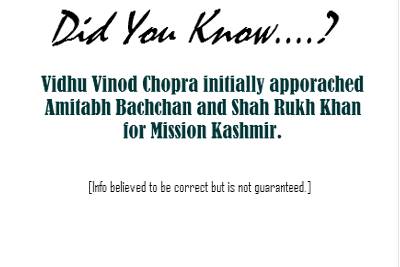



.In 2001, Bollywood sold a million more tickets worldwide than Hollywood did (source: Business Week, 12/2/02)...If you, too, are in the mood for high drama -- whether it be an epic romance, a swashbuckling adventure, a revenge saga, a comedic extravaganza, or a reaffirmation of familial love -- why, then there's no other cinema for you.
~ Courtesy BollyWHAT.ComTable of Contents
.- Definition
- Well-Known Bollywood Film Directors
- Popular Music Directors (Composers & Arrangers)
- History of Bollywood
The name given to the Mumbai-based Hindi language film industry in India. It is considered to be the largest in the world in terms of number of films produced. The term Bollywood was created by conflating Bombay (the city now called Mumbai) and "Hollywood".
Bollywood
Bollywood films are usually musicals. Few movies are made without at least one song-and-dance number. Indian audiences expect full value for their money; they want songs and dances, love interest, comedy and dare-devil thrills, all mixed up in a three hour long extravaganza with intermission. Such movies are called masala movies, after the spice mixture masala. Like masala, these movies have everything.
The plots are often melodramatic, featuring twins separated at birth, conniving villains, evil step-mothers, courtesans with hearts of gold, dramatic reversals of fortune, and improbable coincidences.
Film music is called filmi. It is generally pre-recorded by professional playback singers, with actors mouthing the words, often while dancing vigorously. Of late a few actors have sung for themselves, like Aamir Khan in Ghulam, or Amitabh Bachchan in Baghban and Kabhi Khushi Kabhi Gham. The playback singers are prominently featured in the opening credits and have their own fans, who will go to an otherwise lackluster movie just to hear their favorites. The composers of film music, known as music directors, are also well-known. Their songs can make or break a film.
The dancing in older films is often Indian in style, modeled on folk dancing or the cultivated styles of the courtesans once patronized by the upper classes. In modern films, Indian dance elements blend—sometimes harmoniously, sometimes not—with the influence of MTV. The hero or heroine will often perform with a troupe of supporting dancers, usually of the same sex. If the hero and heroine dance and sing a pas-de-deux, it is often staged in beautiful natural surroundings, such as meadows and gardens.
Bollywood films usually star fair-skinned Indians, often from the northern, Hindi speaking, regions of India. Models and beauty queens continuously replenish the pool of talented hopefuls. The potential rewards are great: stars are well-paid, live lavishly, and are adored by their fans. While some stars rise and fall like rockets, some, like Amitabh Bachchan, become national icons. Directors compete to hire stars, who are believed—perhaps correctly—to guarantee the success of a movie. Stars make the most of their fame by making many movies simultaneously, criss-crossing Mumbai by limousine from one set to another. However, one contemporary star, Aamir Khan has been notable for his insistence on doing quality films and making one at a time.
Film-makers have long borrowed freely from Western sources, often without attribution or licensing fees. Popular Western movies have been adapted to Indian tastes, and Western tunes have been given Hindi lyrics. Rushed production schedules and low budgets encouraged such plagiarism—which could continue with impunity as long as the Western movie and recording industries ignored the very existence of Bollywood. Now that Bollywood movies are more available in Europe and North America, this blatant plagiarism has somewhat diminished. For example, in the recent film Kal Ho Naa Ho (2003), the producers paid a license fee to the estate of Roy Orbison to use the melody of his song "Oh, Pretty Woman".
Bollywood budgets are usually modest by Hollywood standards. Sets, costumes, special effects, and cinematography are often less than world-class. But as Western films and television gain wider distribution in India itself, there is increasing pressure for Bollywood films to attain the same production levels. Sequences shot overseas have proved a real box office draw, so Mumbai film crews are increasingly peripatetic, filming in Australia, New Zealand, England, continental Europe and elsewhere.
Funding for Bollywood films remains hit-and-miss. There are no large studios and until recently, Indian banks were forbidden from lending money to finance film productions. Thus funding often comes from private distributors, and sometimes from illegitimate sources. For example, in 2001 the Central Bureau of Investigation, India's national police agency, seized all prints of the film Chori Chori Chupke Chupke after the movie was found to be funded by members of the Mumbai underworld.
Another problem facing Bollywood is piracy of its films. Often pirated DVDs arrive before the print for the picture.
Finally, television and imported foreign films are making huge inroads into the domestic Indian entertainment market. In the past, most Bollywood films could make money; now only a few are hits. Balanced against this are the increasing returns from theatres in Western countries like the United Kingdom, Canada, and the United States. As more Indians migrate to these countries, they form a growing market for upscale Indian films. 'Foreign' audiences—in Asian and Western countries—are also growing, if more slowly.


